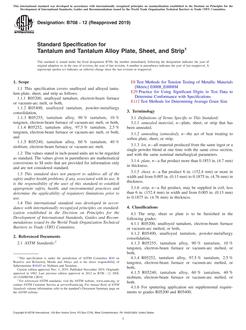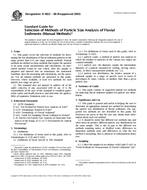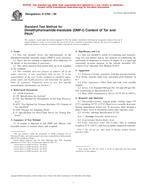1.1 This practice covers the preparation for analysis of waterborne oils recovered from water. The identification is based upon the comparison of physical and chemical characteristics of the waterborne oils with oils from suspect sources. These oils may be of petroleum or vegetable/animal origin, or both. Seven procedures are given as follows:
| Sections | |
| Procedure A (for samples of more than 50-mL volume containing significant quantities of hydrocarbons with boiling points above 280°C) | 8 to 12 |
| Procedure B (for samples containing significant quantities of hydrocarbons with boiling points above 280°C) | 13 to 17 |
| Procedure C (for waterborne oils containing significant amounts of components boiling below 280°C and to mixtures of these and higher boiling components) | 18 to 22 |
| Procedure D (for samples containing both petroleum and vegetable/animal derived oils) | 23 to 27 |
| Procedure E (for samples of light crudes and medium distillate fuels) | 28 to 34 |
| Procedure F (for thin films of oil-on-water) | 35 to 39 |
| Procedure G (for oil-soaked samples) | 40 to 44 |
1.2 Procedures for the analytical examination of the waterborne oil samples are described in Practice D 3415 and Test Methods D 3327, D 3328, D 3414, and D 3650. Refer to the individual oil identification test methods for the sample preparation method of choice. The deasphalting effects of the sample preparation method should be considered in selecting the best methods.
1.3 This standard does not purport to address all of the safety concerns, if any, associated with its use. It is the responsibility of the user of this standard to establish appropriate safety and health practices and determine the applicability of regulatory limitations prior to use. Specific caution statements are given in Sections 6 and 32.
Product Details
- Published:
- 01/01/2002
- Number of Pages:
- 8
- File Size:
- 1 file , 85 KB


